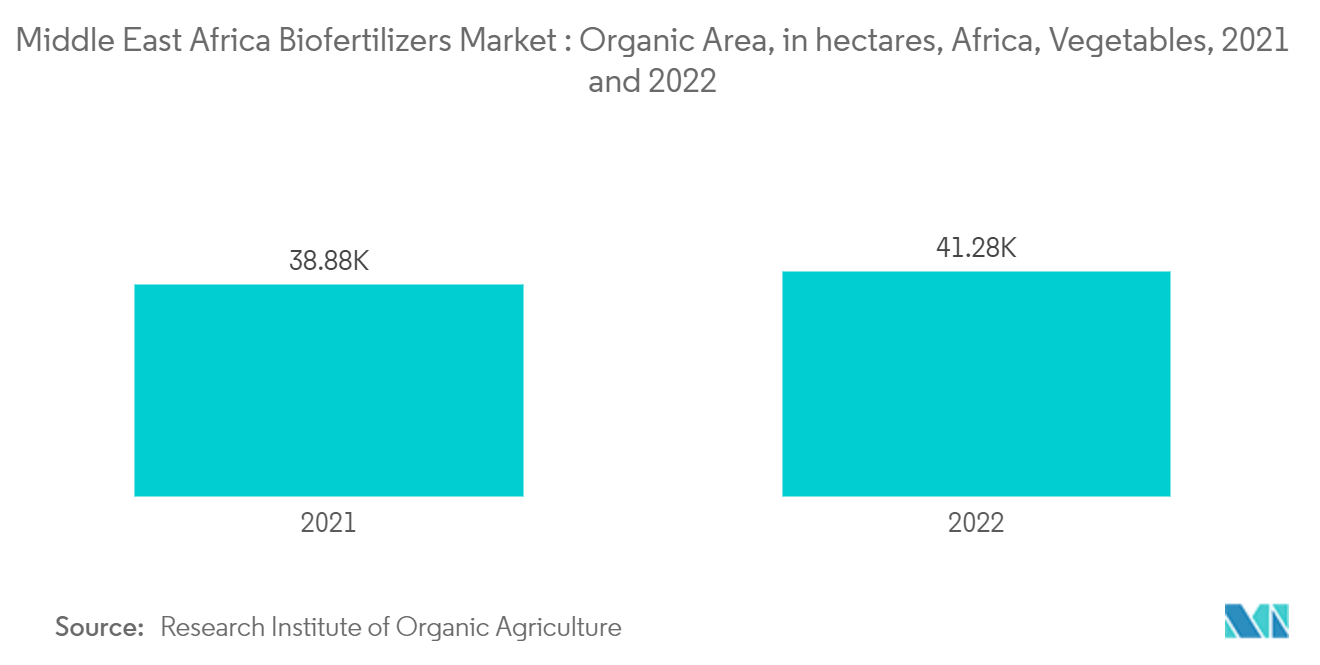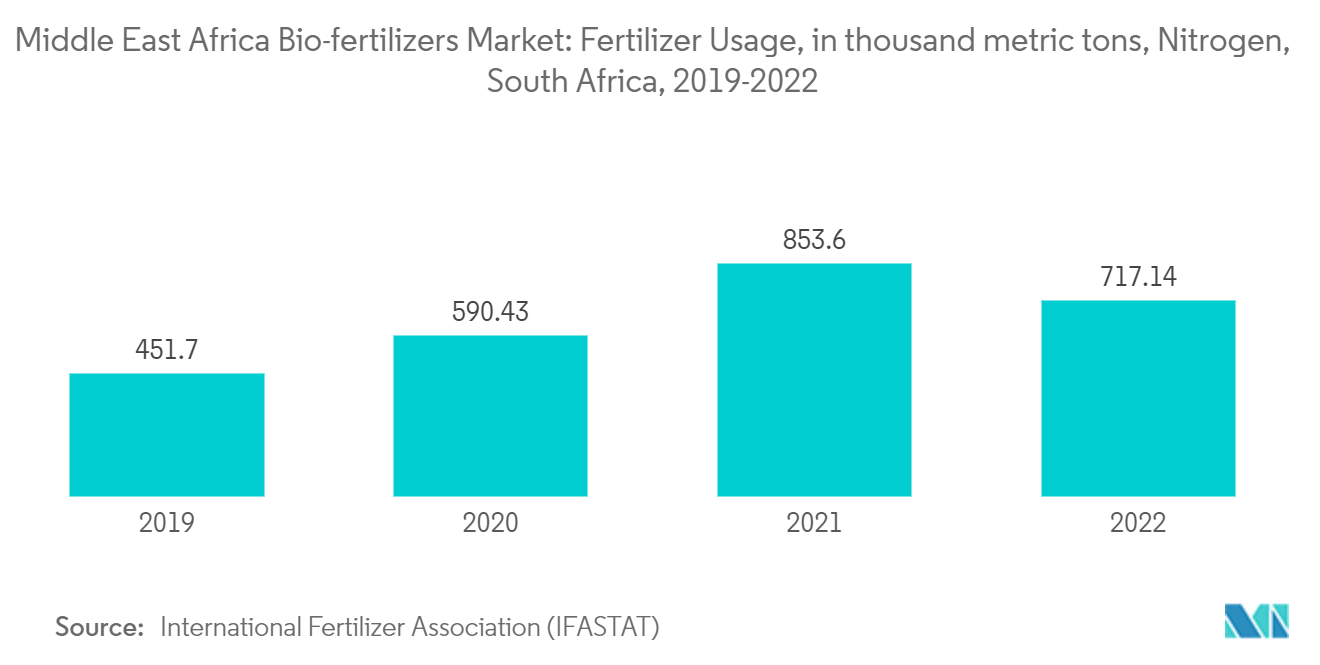Market Trends of Middle East & Africa Biofertilizers Industry
Rising Organic Areas Under Fruits and Vegetables
In the Middle East and Africa, the adoption of biofertilizers in fruit and vegetable cultivation is on the rise. This surge can be attributed to several pivotal factors such as cost-effectiveness, sustainability, a heightened demand for organic produce, and pressing environmental concerns. Farmers are increasingly seeking sustainable alternatives due to the adverse effects of synthetic chemical fertilizers, which include groundwater contamination, soil acidification, and heightened greenhouse gas emissions. Biofertilizers present an eco-friendly alternative, championing natural nutrient cycles, curbing pollution, and posing reduced harm to ecosystems. Furthermore, as global preferences shift towards organic and healthier food choices, there's been a marked uptick in demand for fruits and vegetables cultivated with minimal chemical intervention. By aligning with organic farming principles, biofertilizers bolster the production of premium, pesticide-free crops, fueling their regional growth. Highlighting this trend, data from the Research Institute of Organic Agriculture (FIBL) reveals a rise in African organic cultivation. For instance, grape cultivation expanded from 5,129 hectares in 2021 to 6,151 hectares in 2022, and vegetable cultivation grew from 38,881 hectares to 41,278 hectares in the same period.
Biofertilizers not only rejuvenate soil health and restore microbial balance but also play a pivotal role in curbing carbon emissions while ensuring robust crop yields. This dual benefit has galvanized local governments, farmers, and manufacturers to champion biofertilizers. A testament to this commitment is the UAE government's 2024 launch of the 'Plant the Emirates' initiative, part of the Year of Sustainability. The program aims to boost productive farms by 20%, expand organic farming by 25%, and introduce climate-smart solutions to 30% of farms over the next five years (2025-2030). Such initiatives, bolstered by local players introducing innovative biofertilizer variants with enhanced functionalities, are set to propel the segment's growth in the region. Consequently, the expanding organic farming areas for fruits and vegetables, combined with supportive initiatives, are driving market growth during the forecast period.

Biofertilizer Usage is Dominated by South Africa
Environmental, economic, and agricultural sustainability factors are driving the increasing demand for biofertilizers in South Africa. Efforts to educate farmers about the benefits of biofertilizers are intensifying. As South African farmers become more aware of the advantages, such as improved soil health, higher crop yields, and long-term sustainability, adoption rates are rising. Biofertilizers are often more cost-effective than synthetic fertilizers, particularly for smallholder farmers. They are generally cheaper to produce and, when used correctly, can reduce dependence on expensive chemical fertilizers. This cost-saving aspect is especially appealing in regions where agricultural input costs are escalating, making biofertilizers an attractive option.
Additionally, the growing demand for biofertilizers is attracting new market entrants in South Africa, offering cost-effective and technologically advanced solutions that are boosting market growth. For example, in August 2024, British agri-biotech company Legume Technology introduced a cost-effective alternative to expensive artificial nitrogen fertilizers in the South African market. The company claims that this project will make biofertilizer technology an affordable and accessible agricultural input for small-scale producers in South Africa.
South Africa also faces soil degradation issues, such as nutrient depletion and erosion, exacerbated by conventional farming practices and over-reliance on chemical fertilizers. According to the International Fertilizer Association (IFASTAT), nitrogen fertilizer usage in South Africa increased from 451 thousand metric tons in 2019 to nearly 717 thousand metric tons in 2022. In contrast, biofertilizers, which contain beneficial microorganisms, help restore soil health by improving nutrient cycling, enhancing soil structure, and boosting microbial activity, thus addressing fertility issues. These factors are driving farmers and local governments toward biofertilizer usage, further boosting market growth in South Africa.


